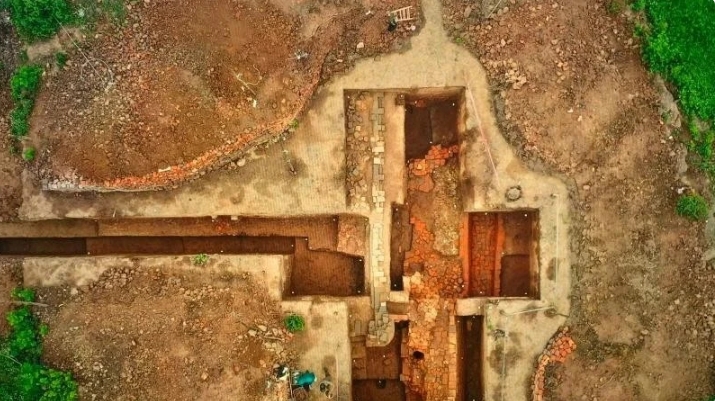Valuable architectural vestiges uncovered in Bac Ninh’s ancient citadel
Many valuable architectural vestiges of the Luy Lau ancient citadel in the northern province of Bac Ninh have been uncovered during recent archaeological excavations.

From March 25 to the end of April, scientists conducted archaeological excavations at the western wall, with a total area of about 76sq.m, aiming to explore the historical and cultural values hidden in the ancient citadel, while promoting international academic research cooperation.
As a result, archaeologists discovered valuable architectural vestiges, notably the 3.3m-long architectural foundation built with gray-blue rectangular bricks along the citadel wall towards the Dau River.
Additionally, at the wall reinforcement layer, they discovered the use of broken bricks from the 7th–9th centuries and the reuse of bricks from the 6th century, reflecting the continuity and inheritance of construction techniques across various historical periods. Remnants such as foundations from the Nguyen Dynasty made of lime mortar and bamboo piles used to prevent subsidence further demonstrate the continuous development of this area throughout history.
Notably, the artifacts uncovered during this excavation are remarkably diverse, including various types of construction bricks, patterned decorative bricks, tubular tiles, curved roof tiles, and household items made of terracotta, stoneware, and glazed ceramics such as bowls, plates, jars, and vases. Some bricks bear ancient Chinese characters, providing valuable evidence for determining the dating and the cultural and political context of this citadel.
Luy Lau is an ancient fortress situated along the Dau River, serving as the administrative centre of Giao Chi district and the capital of Giao Chau. It was a key hub for politics, economy, trade and ancient religious activities in northern Vietnam in the first 10 centuries AD. This is one of the largest urban areas in northern Vietnam, with a rich and diverse number and type of relics and artefacts compared to other relic sites across the country that were active in the same period of history.
Notably, in 1999, Japanese archaeologist Nishimura Masanari unearthed a pieace of a bronze drum mould at the site, hinting at an ancient foundry. Subsequent excavations in 2014 confirmed the presence of a large-scale metallurgy workshop, with over 2,300 pieces of bronze drum moulds collected in 2024. These findings highlight Luy Lau’s role as a key production centre for the Dong Son culture.



